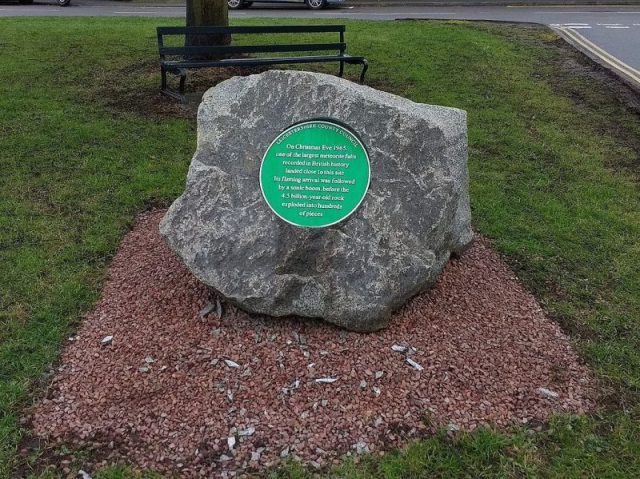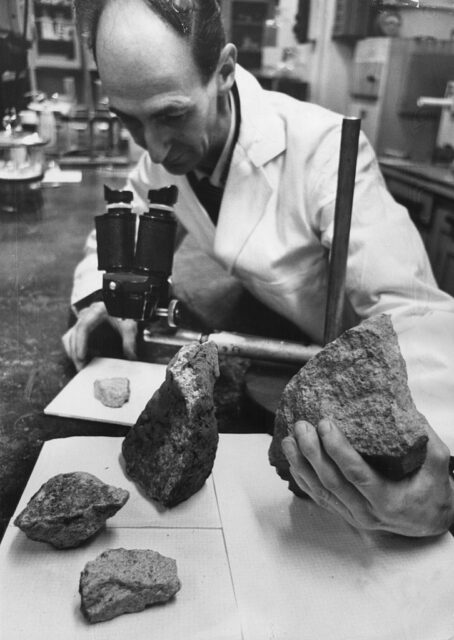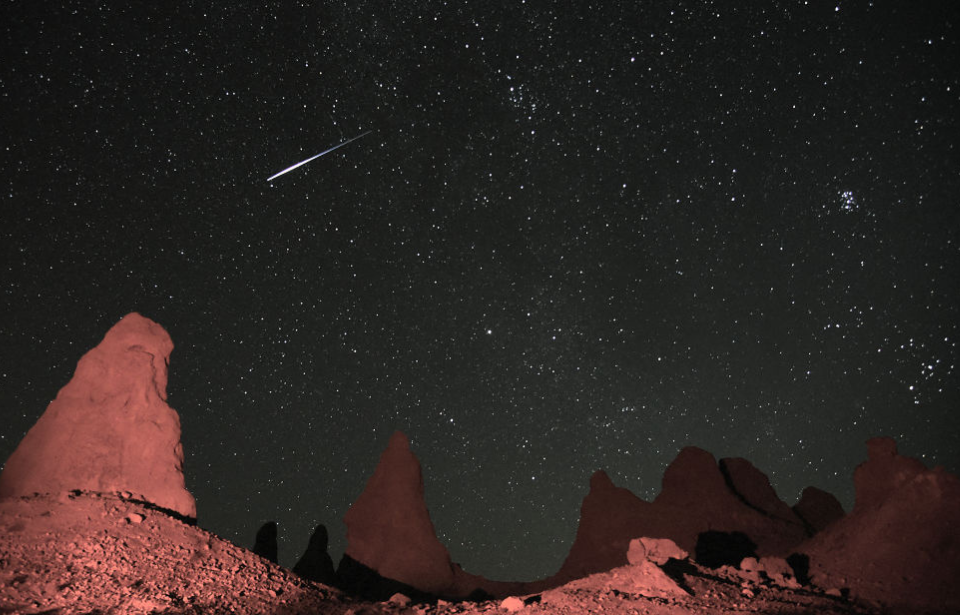You know it’s been a rough year if by the end of it, your greatest surprise is a pierced hood and a broken engine caused by a small piece of a 4.5 billion-year-old meteorite that, of all the places on Earth, just happens to fall on your brand-new car on Christmas Eve.
Furthermore, when the government offered to pay anyone who would bring them a piece, you couldn’t do it, because you threw yours out in anger and outrage.
Today, thanks to Arthur Jack Meadows, the founder and a longtime professor of the Department of Astronomy at the University of Leicester, who was among the first to rush on-site and collect as many eyewitness accounts as he could, and Ted Nield, who published them along with many other related experiences in his book Falling Sky: The Science and History of Meteorites and Why We Should Learn to Love Them, we now have a story that is perhaps even more extraordinary than a falling sky for Christmas Eve.
The holidays came early for Percy England, but it was not the Christmas he was expecting. In fact, it was quite shocking for him and almost everyone else that night in Barwell, England, in 1965, when a meteorite that roamed the Solar System for more than four billion years came close, got pulled in by gravity, and passed through the Earth’s atmosphere until it shattered into pieces over the small village while folks down there were making their final Christmas preparations.
“Half a dozen pieces came down, and at first it seemed like rockets,” said Arthur Crow, a local resident who, according to all accounts, was the first to witness the phenomena. It is not every day you see a meteor shower in the sky, let alone raining down on the Earth. And it was the 1960s. Almost everything was about space, the space race, missiles, and rockets.

The whole meteorite was on a trajectory to hit the city of Leicester. Luckily, it was composed mostly of rock fragments, so it didn’t make the whole trip through our atmosphere. Instead, it split into three smaller fireballs six miles high above Leicestershire County. Crow was on his way from work when he saw a burst of light high up in the sky just moments before small pieces began dropping, one after the other, very quickly and out of nowhere. “The piece that fell outside the house could have knocked anyone’s head off or smashed the roof in,” Crow told a reporter for Leicester Mercury. He was scared stiff, crouching in a corner as the whole thing was taking place, after which he saw “powder rising from the road.” He and many others reported a loud bang before any of this even took place.
Two of the fireballs dissolved completely and the third into small rocks that fell over a radius of several miles. Some of these “small” rocks ended up next to Crow’s house, one through the window and inside it. “I picked up a piece of rock and dropped it again quickly because it was still hot. It was very heavy and black on one side…from burning,” he told the newspaper.
It was the largest meteorite fall ever recorded in Britain. It still is, and the best-documented one, thanks to them.
Another of those burning hot fragments went through the roof and several floors of a factory, and one unfortunately through a man’s dream. As others were getting ready for Christmas, Percy England decided to bring some freshness into his life and bought a brand new Vauxhall Viva for himself and his family not long before the holidays.

Jack Meadows, a longtime admirer of astronomy and with a great interest in “space garbage,” was working nearby in Leicester but came as soon as he could to Barwell and interviewed some of the people right there and then.
England was one of them. According to Meadows, he believed his car was vandalized by hooligans at first. “One man had the bonnet of his parked car hit… and had initially been sure it had been thrown by a couple of boys up the road. It did not cheer him up to find out he was wrong.” As the story goes, his car was insured and covered for acts of vandalism, but it wasn’t insured for meteorite strikes. The insurance company saw it as an “act of God” and refused to pay a dime. Supposedly, he then visited the local church and asked the priest what his master had to say about this, and if they would be willing to repair the damage. But according to all accounts, albeit an interesting twist, this part seems a bit exaggerated and unlikely that it happened.
Jack Meadows was among the few who were part of the team that found some of the fragments of the Barwell Meteorite. There were just a few, but enough to suspect it was something more than just another meteor. One of the pieces held a marble that was believed to be even older than first thought. It was assumed that it was a part of another asteroid that clashed with the one that fell. And that one was believed to be formed when our solar system was born.

In no more than two weeks, one of Meadows’s colleagues recovered a great piece of it near Crow’s and another eyewitness’ houses, which led them to believe there were even more. Larger specimens would harness more results. With that in mind, and helped by London’s Natural History Museum, they offered to purchase every single one. As soon as news spread, the town was flooded with meteorite hunters. By the end of February, almost 90 pounds of the rock were recovered and some made serious cash out of it. But not Percy England.
In anger and cursing the vandals, he had thrown the rock from space into a field, and when he heard the news, that rock was already gone. Someone else had cashed it in already. By his rough estimation, the rock was around six pounds; for instance, a two-pound piece of it was sold for $11,000 in 2009.
The recovered examples are kept at the Natural History Museum and it is assumed that there are even more of them out there. In contrast to England, nostalgic people in Barwell kept souvenirs for themselves and are still reluctant to let go of them or sell them, even after all this time.
More from us: This Dagger Found In King Tut’s Tomb Is Literally Out Of This World
“It’s the debris from the birth of our solar system,” explained planetary scientist Leigh Fletcher from the University of Leicester for BBC News Magazine. “It’s no wonder people keep a piece of it tucked away in a box.”
